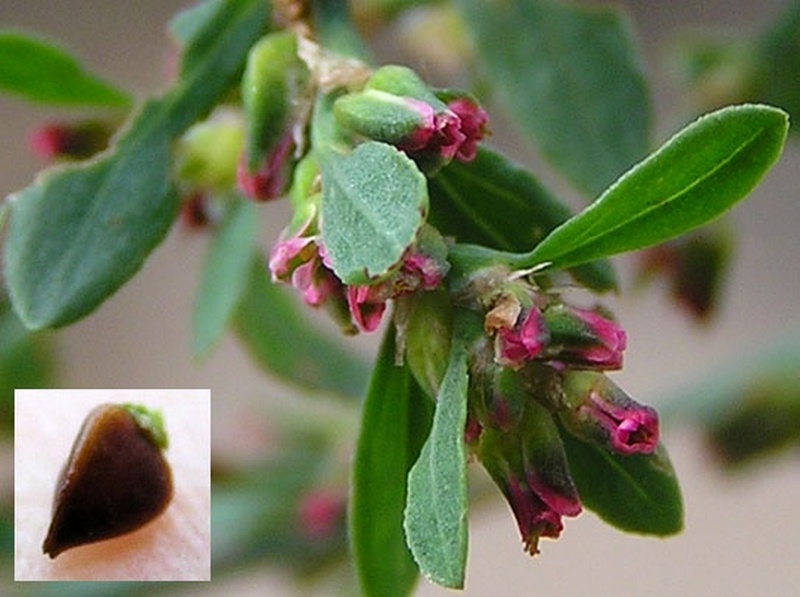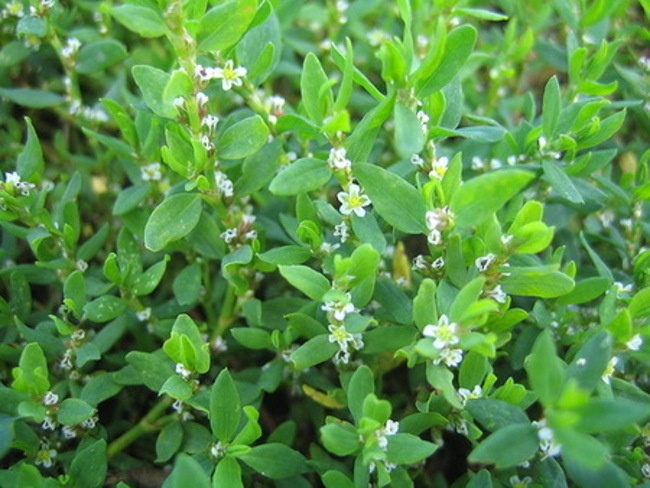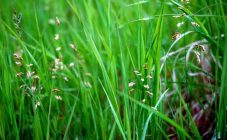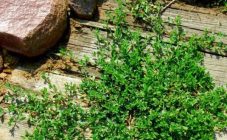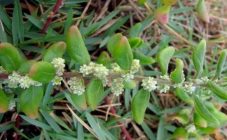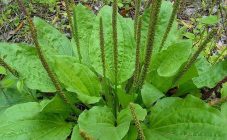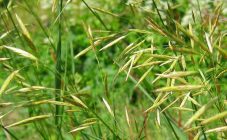Content:
Everyone knows from children's fairy tales such an expression - "murava grass", but not everyone knows how it might look, although this grass is found everywhere. In folk medicine, it has been used for several centuries and has an official name - bird mountaineer (can also be called knotweed).
Description of culture
The townspeople do not even realize that they meet the grass of a mountaineer practically at their feet. Knotweed settles not only on lawns, but also in crevices of asphalt paths, in dumps, near dwellings, on pastures, etc. Where other plants are uncomfortable, ant grass grows easily.
In order not to confuse a representative of the Buckwheat family with other plants, you need to find out how the highlander looks like.
Description of the herb:
| Part of the plant | Signs |
|---|---|
| Stem | Branched, recumbent or slightly raised, with typical "knees" |
| Leaves | Very small, lanceolate, elliptical, dark green in color |
| Flowers | Miniature, whitish in color, sometimes with pinkish edges. They hide 3-5 pieces. in deciduous sinuses |
| Root | There is no pronounced one - it is replaced by a lodging stem with small rooting branches |
| Fetus | 3-sided nut, black or brown |
Varieties of highlanders:
In the Buckwheat family, there are other representatives with a similar name, but outwardly they differ from each other.
| Plant parts | Highlander pochechuyny (goose grass) | Highlander serpentine (cancerous neck) |
|---|---|---|
| Stem | Naked, erect, branched, reddish tint, from 0.2 to 2 m high | Reaches a height of up to 1 m, but is practically invisible behind the large sparse foliage |
| Leaves | Pointed, with whole edges, oblong lanceolate, with short petioles. The surface of the leaf plate is shiny, there is a brown spot on the upper side | Linear sessile, growing from one point. Basal oblong, with long petioles, "wings" |
| Flowers | Small, pink, collected in cylindrical brushes at the tops of the stems | Pinkish or white, up to 10 mm long and the same width. Collected in cylindrical spikelets at the top of the stem |
| Fetus | Shiny black ovate nut. May be flat or unilaterally convex, sometimes triangular | Shiny achene-nut on 3 sides of dark brown color |
| Root | Weakly branched rod | · Up to 2 cm thick, slightly flattened. Covered with numerous scars left by dead leaves and stems; · Outwardly resembles a curved snake body up to 10 cm long; Outside brownish, pinkish at a break |
| Other features | Annual blooming from June to September | · Perennial plant blooming in July-August; A tart taste is inherent in all parts of the plant |
| Habitat | Everywhere on moist soils, meadows, along the banks of ponds and rivers | Loves wet places - along water bodies, in flooded meadows, in thickets of bushes |
If the grass of ants is interesting what kind of plant it is, you can already understand from the above description.
How the plant reproduces
An ant grass can appear on the site spontaneously if there are clumps of it somewhere in the immediate vicinity. Some farmers specially breed knotweed - this is a very nutritious raw material, it can mean a lot when breeding livestock and poultry.
Sometimes summer residents use the mountaineer bird for decorative purposes, using it to create a lawn in nondescript, infertile areas, as well as framing garden paths.
To start knotweed in the country, it is enough to dig one curtain and transfer it to the site, or collect seeds and simply scatter it over the surface of the earth. The highlander will grow quickly enough and fill the entire territory allotted to him. But the owner will have to worry about the restrictions so that the knotweed does not enter the beds.
Delimitation can be carried out with a strip of mulch along the edge of the garden. True, this will not save you from flying seeds. The grass sprouted on vegetable plantations and in the berry must be constantly weeded out.
If the farmer decided to breed the highlander bird on the land, he will not have to waste time caring for him. The plant has enough natural conditions for development. But if you want to get more juicy grass, it is advisable to periodically irrigate the site during the hot season.
Culture properties
It is necessary to use the ground part of the plant in folk recipes. The medicinal composition includes a large amount of silicic acid. There are also tannins and resinous substances, organic acids, fats, carotene, sugars, vitamins and other useful components. Ascorbic acid alone is 3 times more than in lemons.
The glycoside flavone avicularin, which is present in the herb, is used by pharmacology in the production of the drug "Avicular". It is prescribed to increase blood clotting and to women to contract the uterine muscles.
In folk medicine, decoctions are made from knotweed, juice is squeezed out, dry raw materials are ground into powders. These drugs are credited with anti-inflammatory, diuretic, restorative properties. Therefore, the herb has targeted use:
- drugs help to grind and expel any stones from the kidneys, urinary and cholagogue;
- decoctions treat catarrh of the stomach and inflammation of the genitourinary system;
- expel bile from the body and treat the liver;
- knotweed is effective against lung diseases, incl. tuberculosis;
- useful weed for hypertensive patients and the elderly;
- has a beneficial effect on the nervous system;
- decoctions well eliminate swelling on the legs;
- useful for the treatment of hemorrhoids and ulcers;
- the juice of the herb is rubbed into the head with seborrhea;
- externally apply vapors of stems and make lotions of chopped grass for cuts, wounds, bruises and in the treatment of skin diseases.
Knotweed is recommended in the form of a tea to increase immunity in case of long-term illnesses and exhaustion. The herb is present in slimming products, as it has a good effect on metabolic processes. But the most valuable is the use of knotweed herb, bird knotweed, in the treatment of cancer.
Recipes
- take 10 g of herbs in 2 cups of water in the broth and boil for 20 minutes; insist 2 hours, filter and drink 100 g three times a day;
- the infusion is made on water, pouring boiling water (300 ml) of 5 g of raw materials; stand for 3-5 hours and filter; take 1 tbsp. before eating;
- to suspend profuse menstruation, a herbal collection is recommended - 3 parts of knotweed and shepherd's purse, 4 parts of white mistletoe; 1 tbsp the mixture is steamed with a glass of boiling water and insisted for half an hour. Take ¾ glass every evening, not forgetting to strain.
Contraindications
The powerful composition of medicinal plants is not useful for everyone. There is a category of people who can be harmed by knotweed:
- the drug can provoke the development of thrombosis and an attack of angina pectoris;
- lead to heart attack and stroke;
- a serious contraindication is pregnancy, since knotweed has an abortive property.
It must be borne in mind that when treating one disease, there is a risk of aggravating another. So, for example, in the treatment of hypertension, an exacerbation of gallstone disease can be provoked.
Take the herb with caution to loosen the stones. If one does not succumb to the action of the drug, it is able to block the bile duct.
About diseases and pests
The bird highlander is a rather tenacious plant. He is not annoyed by diseases or pests. But the ant attracts animals and birds with a pleasant aroma and taste. Although after such an invasion, the plant quickly recovers.
Harvesting grass
Raw materials are recommended to be harvested at the beginning of flowering, but many people prefer to harvest throughout the summer. In this case, only twigs that have not had time to give fruit should be taken. The stems are cut carefully at the very base.
Places for collection are chosen away from roads, industrial enterprises, cattle pastures. They are sent to workpieces in dry, calm weather.
Having brought the raw material home, it is carefully sorted out and accidentally trapped parts of the stem with roots, as well as brown leaves, are removed.
The workpiece is stored in sealed jars, cloth bags or paper bags in a dry, dark place. It is advisable to use knotweed in the first 2 years. The maximum shelf life is up to 3 years.
If it is not possible to breed knotweed in the country, you can periodically go to harvest the grass. Her presence in the home medicine cabinet never hurts. In addition, the bird highlander tolerates freezing well without losing its properties. It is a good raw material for pie fillings.
In the summer, it is advisable to introduce young grass with salad compositions. It will turn out tasty and healthy. You can wash your hair with a decoction of the herb, which will make your hair healthy and silky. Our ancestors made fabric dyes from the plant: from the leaves - yellow and green, from the roots - blue.
